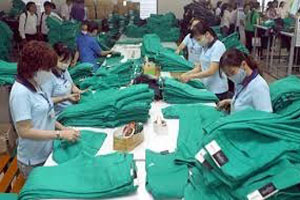
Vietnam garment exports dwindling due to increase in sourcing costs
YarnsandFibers News Bureau 2017-10-05 12:00:00 – HanoiIncrease in wages for workers and logistics costs, putting Vietnam’s local garment exporters under pressure, particularly in the face of fierce competition from regional rivals like Bangladesh, Myanmar and Cambodia.
Part of the problem with Vietnam’s competitors is they are enjoying preferential policies from their governments—including things like tax breaks to boost exports—where Vietnam hasn’t had as many of these perks. They’ve also enjoyed preferential trade status from major trade partners like the U.S. and EU, something the Trans-Pacific Partnership would have afforded for Vietnam with its exports to the U.S.
Chairman of the Vietnam Textile and Apparel Association Vu Doc Giang said that the sector aims to export roughly $30 billion worth of textiles and garments in 2017, with the U.S. taking 50 percent of that total, followed by the EU with 20.5%, Japan with 19.5% and Korea importing 7.5% of Vietnam’s garments and textiles.
According to OTEXA data, the U.S. has taken in $6.8 billion worth of textiles and apparel from Vietnam for the year through July, a 5.36% year over year increase,. In 2016, U.S. imports totaled $11.3 billion, which was a 2.27% increase over 2015.
For the year through August, according to The Voice of Vietnam, the country’s exports reached $19.8 billion, but the Ministry is concerned the $30 billion target won’t be reached since the bulk of the country’s big orders have likely already been placed.
No timeline has yet been made available for when some of these cost cuts could take effect, and it remains to be seen whether these cuts will be passed on to companies sourcing in Vietnam.
The Ministry of Industry and Trade in Vietnam is in the process of drafting legal amendments designed to help domestic garment producers cut costs, and they’ve also implored state agencies to support domestic textile and garment exporters with things like administrative procedures to help ease some of the other obstacles to competition.
Market Intelligence
Ask for free sample Report

experience
Customer Base
dedicated team
Countries Served Worldwide









